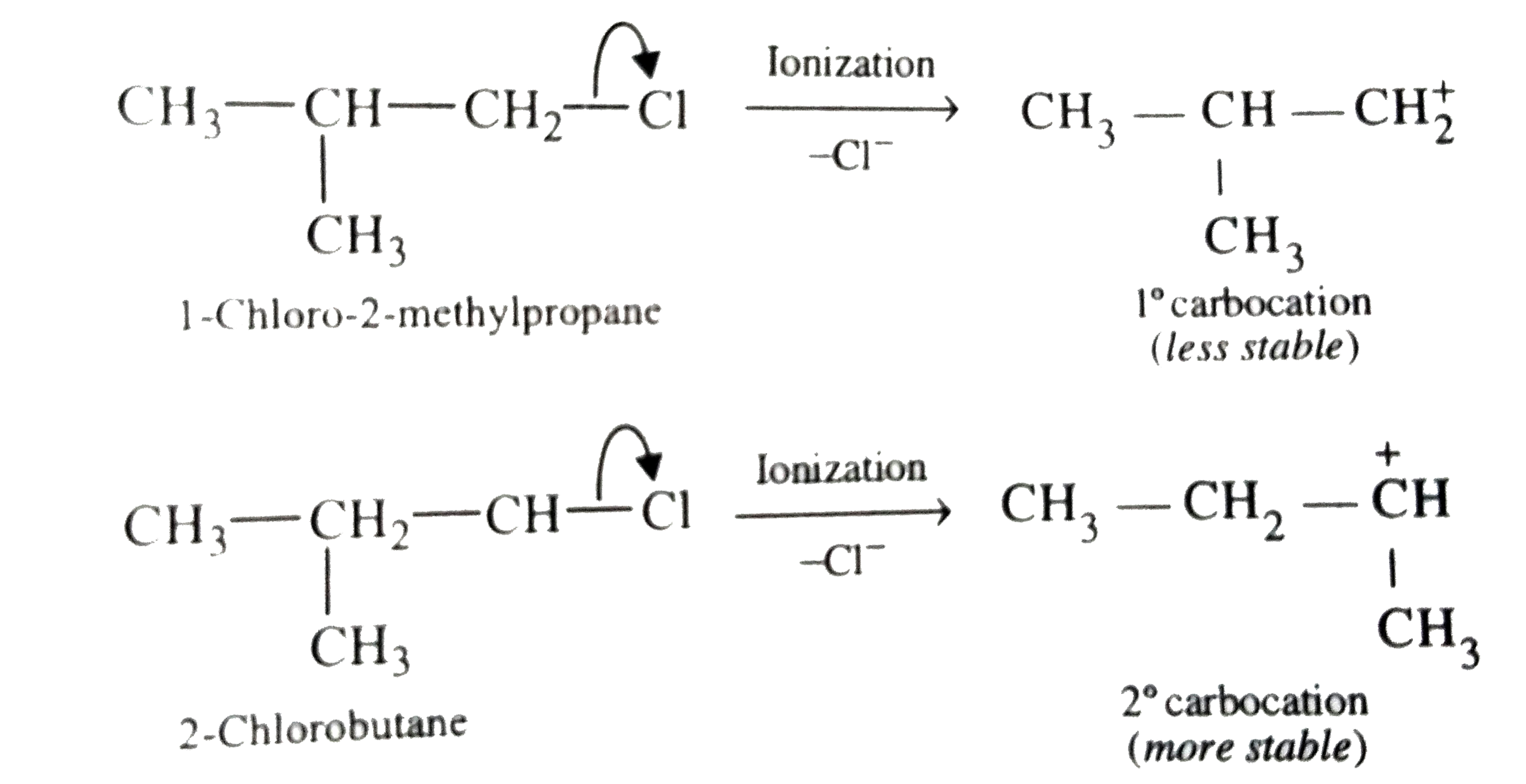Out CH3−CH∣CH3−CH2−Cl and CH3−CH2−CH∣CH3−Cl , which is more reactive towards SN1 reaction and why?
Video Solution
Text Solution
Reactivity in SN1 reactions depends upon the stability of the carbocation it gives on ionization. Now, the first compound, i.e., 1-chloro-2-methylpropane gives a 1∘ carbocation and the second compound, i.e., 2-chlorobutane gives a 2∘ carbocation.

Since 2∘ carbocations are more stable than 1∘ carbocations, therefore, second compound, i.e., 2-chlorobutane reacts faster than the first compound, i.e., 1-chloro-2-methylpropane.
Alternatively, first compound, i.e., 1-chloro-2methylbutane is a 1∘ alkyl halide while the second compound, i.e., 2-chlorobutane is a 2∘ alkyl halide. since in SN1 reactions, 2∘ alkyl halides are more reactive than 1∘ alkyl halides, therefore, second compound, i.e., 2-chlorobutane reacts faster than the first compound, i.e., 1-chloro-2-methylpropane.
|
Topper's Solved these Questions
- HALOALKANES AND HALOARENESBOOK - PRADEEPCHAPTER - HALOALKANES AND HALOARENESEXERCISE - ADDITIONAL QUESTIONS (SHORT ANSWER QUESTIONS)
47 Videos
- HALOALKANES AND HALOARENESBOOK - PRADEEPCHAPTER - HALOALKANES AND HALOARENESEXERCISE - ADDITIONAL QUESTIONS (LONG ANSWER QUESTIONS)
4 Videos
- HALOALKANES AND HALOARENESBOOK - PRADEEPCHAPTER - HALOALKANES AND HALOARENESEXERCISE - NCERT EXEMPLAR PROBLEMS WITH ANSWERS, HINTS AND SOLUTIONS (LONG ANSWER QUESTIONS)
3 Videos
- GENERAL PRINCIPLES AND PROCESSES OF ISOLATION OF ELEMENTS BOOK - PRADEEPCHAPTER - GENERAL PRINCIPLES AND PROCESSES OF ISOLATION OF ELEMENTS EXERCISE - Curiosity Questions
2 Videos
- ORGANIC COMPOUNDS CONTAINING NITROGENBOOK - PRADEEPCHAPTER - ORGANIC COMPOUNDS CONTAINING NITROGENEXERCISE - IMPORTANT QUESTIONS FOR BOARD EXAMINATION
27 Videos
Similar Questions
Knowledge Check
CH2CH2CH2−Cl and CH3−CH∣CH−CH3 shows which type isomerism
AChain isomersBposition isomersCFunctional isomersDMetamers
Out of CH3−C∣CH3H−CH2−Cl and CH3−CH2−C∣CH3H−Cl, which is more reactive towards SN1 reaction and why ?
View SolutionCH3−CH∣OH−CH2Cl
View SolutionCH3−CH∣Cl−COOH
View SolutionCH3=C∣Cl=CH−CH2−CH2OH
View SolutionHOCH2−CH3−CH∣CH3−CH2−CH∣CH3−CH2OH
View SolutionCH3C∣CNHCH2C∣ClH−CH3
View SolutionCH3−CH2−CH2−C∣OHH−CH3 and CH3−CH2−C∣OHH−CH2−CH2−CH3 are
View Solution
